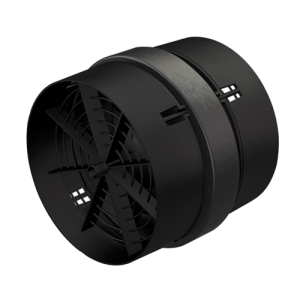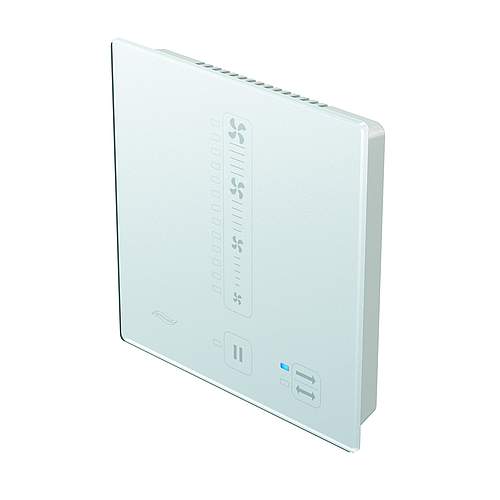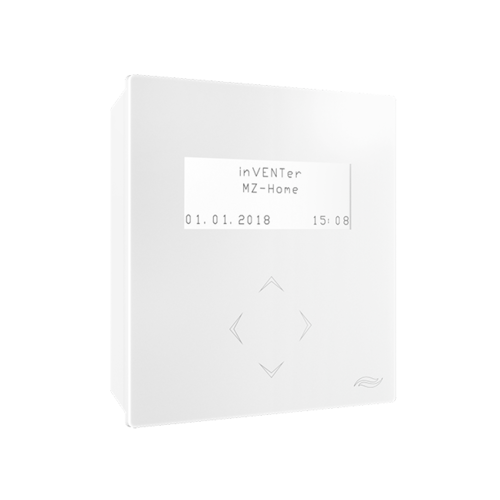Construction of a decentralized ventilation systemVentilation principle for decentralized ventilation units
According to the technical definition, ventilation is a technical system with which fresh air is fed into rooms or buildings. Ventilation systems can be roughly divided into centralized and decentralized systems. Decentralized ventilation systems for living spaces are designed in such a way that the ventilation units are divided in pairs in different positions within a residential unit. The first step for the installation of a decentralized ventilation system is the planning and calculation of the necessary air volumes.
After that, the fans must be installed in the outer wall. In new buildings, bricks are left out or wall mounting blocks are used to create an opening for the device. In the case of renovations, an opening is drilled into an existing wall using a core hole. The wall sleeves are foamed into the resulting openings, the heat storage unit with fan is inserted and finally the system is covered on the outside and inside with a weather protection hood or inner panel.
How does a decentralized ventilation system with heat recovery work?
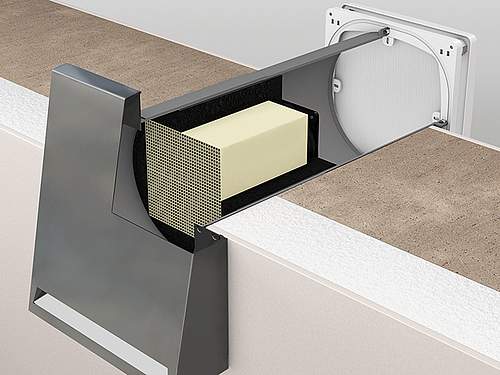
The function of living space ventilation is as follows: In decentralized ventilation systems for living spaces, the ventilation devices are always used in pairs. It is not always necessary to place two fans in one room. They can “communicate” with one another through overflow openings, e.g. through a small door gap. This principle is called cross ventilation – it ensures that the living space is effectively flowed through with fresh air.
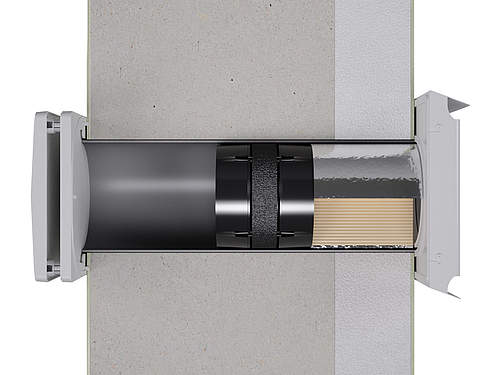
The function of living space ventilation is carried out by the ventilation devices, which work in push-pull: The reversing fan of a ventilation device rotates in one direction for 70 seconds and transports the stale air to the outside. The ceramic heat accumulator stores the heat from the air from the interior. Then the direction of rotation of the fans of both ventilation units changes. Fresh air now flows into the living room from outside. The ceramic releases the stored heat back into the fresh air – called heat recovery. This means that up to 93 percent of the heat can be retained. This function of living space ventilation is also known as the push / pull principle due to the different air directions.
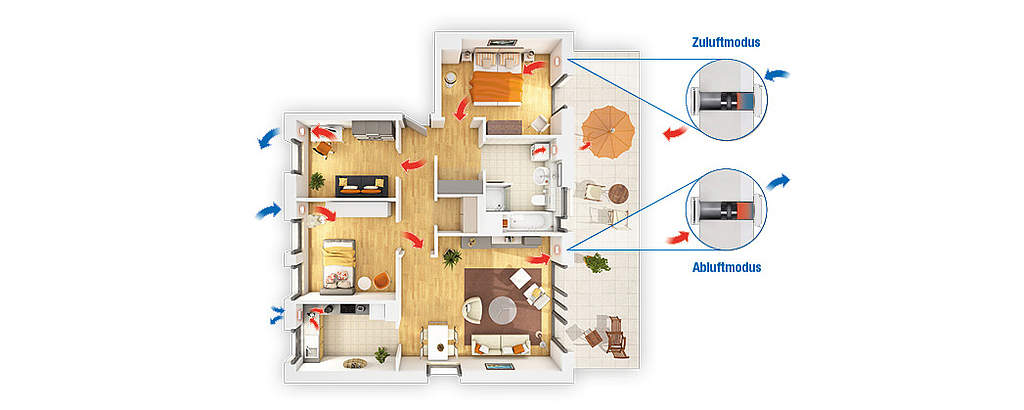
Structure of a decentralized ventilation unit
A decentralized ventilation device basically consists of the following components: inner cover, reversible fan, ceramic heat storage, wall sleeve and weather protection hood. There are also systems in which the air is exchanged via a cross-flow heat exchanger. The structure and function of the ventilation system can be found in the following table:
Function
- Lockable inner cover of the ventilation system
- Uncomplicated to use
- Equipped with a dust filter as standard
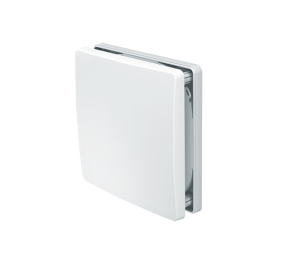
Inner panel Flair for decentralized ventilation units Inner panel Flair can be tilted to all sides in order to direct the air flow e.g. up or down. Operation possible in soundproofing position
Quick release by a simple push movement
Inner cover can also be ordered with SDE sound insulation insert
Dust filter G3 can be replaced by special filters: pollen filter G2 (allergenic particles), fine filter F5 (fine deposits), activated carbon filter AKF (deposits and odors as well as pollutants)
Uncomplicated filter change thanks to easy access to the components. Done in a few simple steps
Function
- Fan that is responsible for supplying and extracting fresh air
- In reversing mode (heat recovery), the direction of rotation changes every 70 seconds (extract air vs. supply air). In heat recovery mode: supply air and extract air modes alternate continuously
Advantage with inVENTer
- The heart of the iV ventilation system
- Low power consumption (1 – 3 W)
- Quiet, long-life fan suitable for continuous operation. InVENTer is the only manufacturer to offer a 5-year manufacturer’s guarantee on the reversible fan
- Special electronics were specially developed for reversing operation in decentralized ventilation units
- High performance: e.g. iV25 reversing fan creates 110 m³ / h in exhaust air mode
Function
- Innovative ceramic heat storage including insulation as thermal insulation
- Heat recovery works according to the regenerator principle: alternating charging and discharging of the ceramic with the room heat, which can be recovered as a result
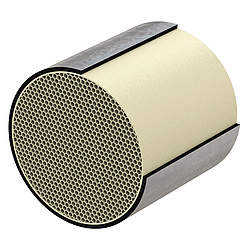
- High-performance industrial ceramics with high heat capacity
- By changing the direction of the air volume flow, up to 93% of the room heat is recovered; on average, the heat recovery values are approx. 80 – 84%
- The design results in a large surface area for heat exchange thanks to the innovative honeycomb structure
- Ceramic is hygienically harmless; the continuous reversing operation prevents organic contamination in the systems
- The cleaning process is simple and straightforward. The ceramic unit can be removed quickly and cleaned by the user under running water. The use of a specialist company is not necessary
- The indestructible ceramic unit is covered by the inVENTer manufacturer’s guarantee for 30 years
Function
- Round wall duct that is inserted directly into the outer wall
- Serves to integrate the heat storage tank and fan as well as other accessories, if necessary
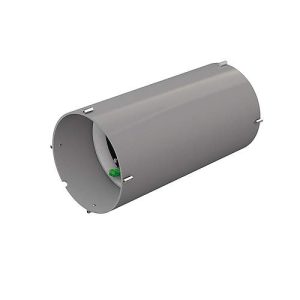
- Sturdy material that can be cut to the desired length depending on the wall thickness
- The built-in gradient means that condensate is drained away without any problems, if there is any condensation at all
- Thanks to the inVENTer wall installation blocks or the unique “Simplex” wall installation system, the wall sleeve can be quickly and easily integrated into the new building without a core drill hole
- To be shortened to the desired length
Function
- External cover of the ventilation system on the facade
- Protection of the system from the weather
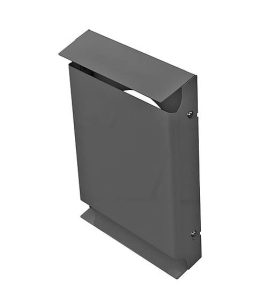
- High-quality materials: stainless steel, coated in the colors white, gray and north. A large number of other RAL colors can be ordered to match the facade on request
- The facade outflow of the exhaust air is given by the design and was extensively tested during development
- Drip edge for any condensate that may be susceptible
- The Nova weather protection hood includes a protective grille as standard to ward off animal visitors
Accessories and controllers for ventilation systems for living spaces with heat recovery
Accessories for decentralized ventilation systems
A large number of accessories are available for decentralized ventilation systems. There are additional filter systems as well as noise protection and wind protection measures for inVENTer ventilation systems. For allergy sufferers or for special circumstances (e.g. high levels of fine dust pollution), both pollen and fine filters can be retrofitted, the activated carbon filter keeps bad smells away. Sound insulation is often a special requirement – this can be improved in inVENTer ventilation systems with a sound insulation insert, sound insulation insert and sound protector. The wind protection plays a role especially in coastal areas – it is recommended to install the wind protection insert in the wall sleeve.
Controller for decentralized ventilation units
Controllers are connected to the individual ventilation devices in a decentralized system. These ensure that the fans are connected to each other and run in the right direction. In this way, the decentralized ventilation system can be controlled as required. The controllers have different functions. Simple control via a touch-sensitive user interface (touch surface) is just as possible as setting up individual ventilation zones using our premium controller, with which the ventilation is pre-programmed to precisely meet the needs of the residents with the help of a weekly timer.
Function of pure extract air devices for ventilation
Exhaust air devices discharge stale air from the living space to the outside, they only work in one direction and without heat recovery. Exhaust systems are often used in bathrooms, storage rooms or infrequently used rooms. But there is also the option of equipping entire residential units with exhaust air systems.
When used in the bathroom, the devices only run intermittently. The exhaust air devices are equipped with humidity sensors, light sensors or overrun switches and are particularly in operation when required, e.g. B. after showering or if the humidity rises for other reasons.
In storage rooms or seldom used rooms, the devices are intended for permanent operation. In addition to the exhaust air devices, which usually bring air to the outside 24 hours a day, air outlets are built into the outer walls of the residential unit, through which fresh air can flow in. This effectively prevents mold and moisture. It should be noted, however, that no heat recovery takes place.


